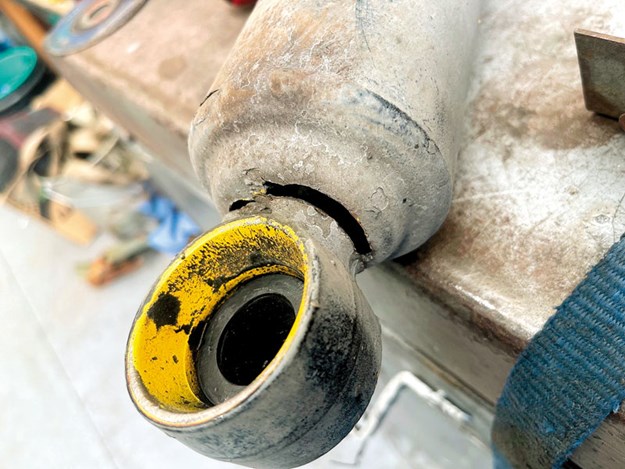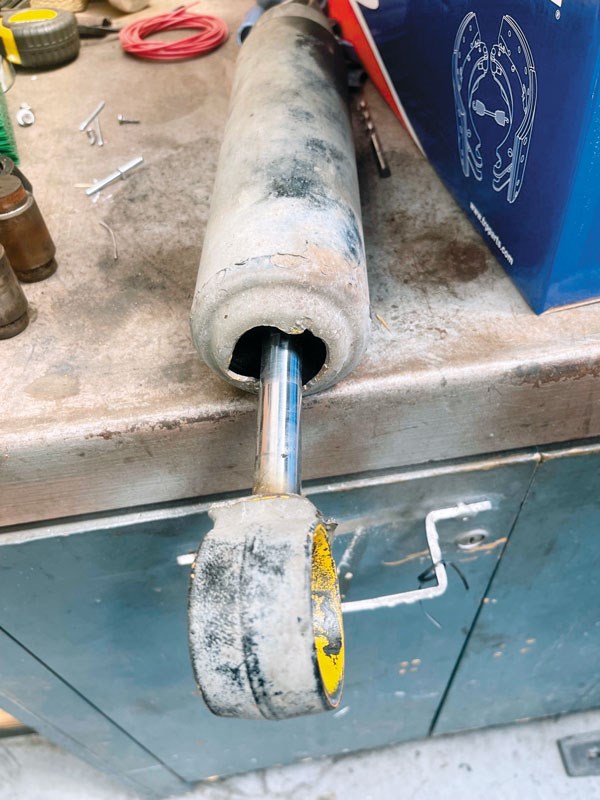Comment: The state of NZ roads
David Boyce discusses the impact poorly maintained roads are having on NZ's trucking industry
 |
|
Shocks off a truck that has only done 45,000km
|
Photos of broken truck shock absorbers sent to me by a member of NZ Trucking Association recently highlighted to me the poor condition of some of the state highway network.
As he said, "Dave, I have been operating trucks on the Lewis Pass to Nelson highway and back for more than 30 years, and I have never seen the road condition as bad as it is now; these shocks are off a truck that has only done 45,000km.
 |
|
A broken truck shock absorber
|
I would normally expect to get more than 500,000km out of them before needing replacement. The maintenance costs on my trucks using this road are killing my business!"
This conversation is like others I have had with transport operators concerned about the deteriorating standard of roads across our state highway network.
The Road to Zero strategy adopted by the Government and being enacted by its agencies is based on a vision for New Zealand where no one is killed or seriously injured in road crashes. This strategy is driving decisions on where the Government roading budget is being spent.
The Road to Zero Strategy has five key focuses:
Infrastructure improvements and speed management
- Median barriers
- Side barriers and rumble strips
- Reduced speeds
- Intersection improvements
- Safety on footpaths and cycleways
Vehicle saftey
- New vehicle safety standards
- Increase public understanding of vehicle safety standards
- ABS motorcycles
Work-related road saftey
- Review logbook and work time requirements
- Improve private sector initiatives on best practice
Road user choices
- Alcohol and drug use
- Enforcement
- Penalties
- Driver training
- Motorcycle safety
System management
- Strengthen national leadership in safe system training
- Improve public understanding
It’s good to see a Government policy that’s aimed at making our roads safer. Unfortunately, this policy is noticeably light on detail and budget when it comes to maintaining the existing roading network to a standard that not only protects the roading asset but also protects New Zealand’s economic lifeline, with 93% of all freight travelling by road.
Poorly maintained roads hit everyone in the economic pocket, from transport operators with increased maintenance costs right through to the end consumer with the increased price of the goods that they purchase.
Poorly maintained roads are a road safety issue. For truck drivers, it adds increased fatigue, stress, health issues, and distraction to an already demanding job. It also puts extra pressure on transport operators in a tight labour market as drivers are quitting to avoid the demands.
It appears that changes in roading maintenance policies adopted by road controlling authorities in recent years to ‘sweat the asset’ further has now deteriorated to a ‘run to failure’ approach. Any transport operator will tell you that a preventative maintenance approach is the safest and most cost-effective approach to running a trucking fleet.
If trucking operators took the ‘run to failure’ approach to fleet maintenance, they would be ordered off the road by the enforcement authorities and probably lose their right to operate. Perhaps, there are some lessons here for those in charge of the road maintenance budgets.
Our roading network requires ongoing maintenance throughout its life cycle, which can be dependent on several factors, including traffic volumes, heavy vehicle use, economic importance to New Zealand, age of the roading asset, the resilience of the network (which was clearly highlighted with the Kaikoura Earthquakes), community importance, and environmental considerations.
There are three basic types of road maintenance strategies: preventative, corrective, and replacement. Preventative maintenance keeps the road network at a reliable level of service and avoids rapid deterioration of the roading asset.
Corrective maintenance prevents the road structure or section of road from reaching high levels of damage, with large scale interventions, including structural rehabilitation.
A road replacement programme is needed when the road has reached the end of its service life and is continually requiring rehabilitation.
To successfully extend a road’s lifespan, a combination of preventive and corrective maintenance is critical at various stages of the road assets life cycle, with the emphasis on preventative maintenance, not sweating the asset to the point of no return.
Poorly maintained roads, especially on key freight routes, impacts badly on New Zealand’s economic competitiveness, especially for a country that relies so heavily on exporting primary products to overseas markets.
Poor road conditions influence negatively on road user costs, including higher vehicle maintenance, higher fuel consumption, longer journey times, lower comfort, and higher safety risks. Ultimately, the worse the road condition, the higher overall cost to the road user; for road freight, this directly relates to higher costs being passed onto end consumers, exporters, and importers.
Find new and used trucks for sale in NZ
Keep up to date in the industry by signing up to Deals on Wheels' free newsletter or liking us on Facebook.




.jpg)


.jpg)



.gif)
.gif)
.gif)
.gif)


